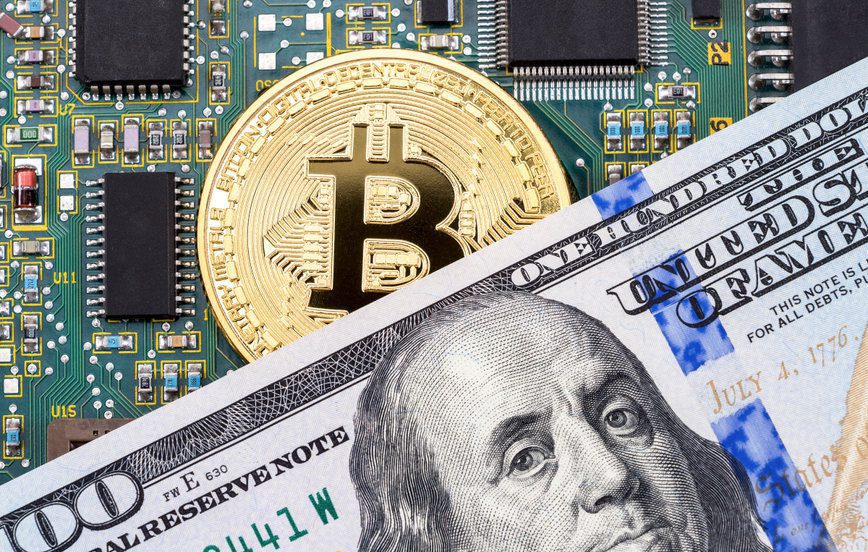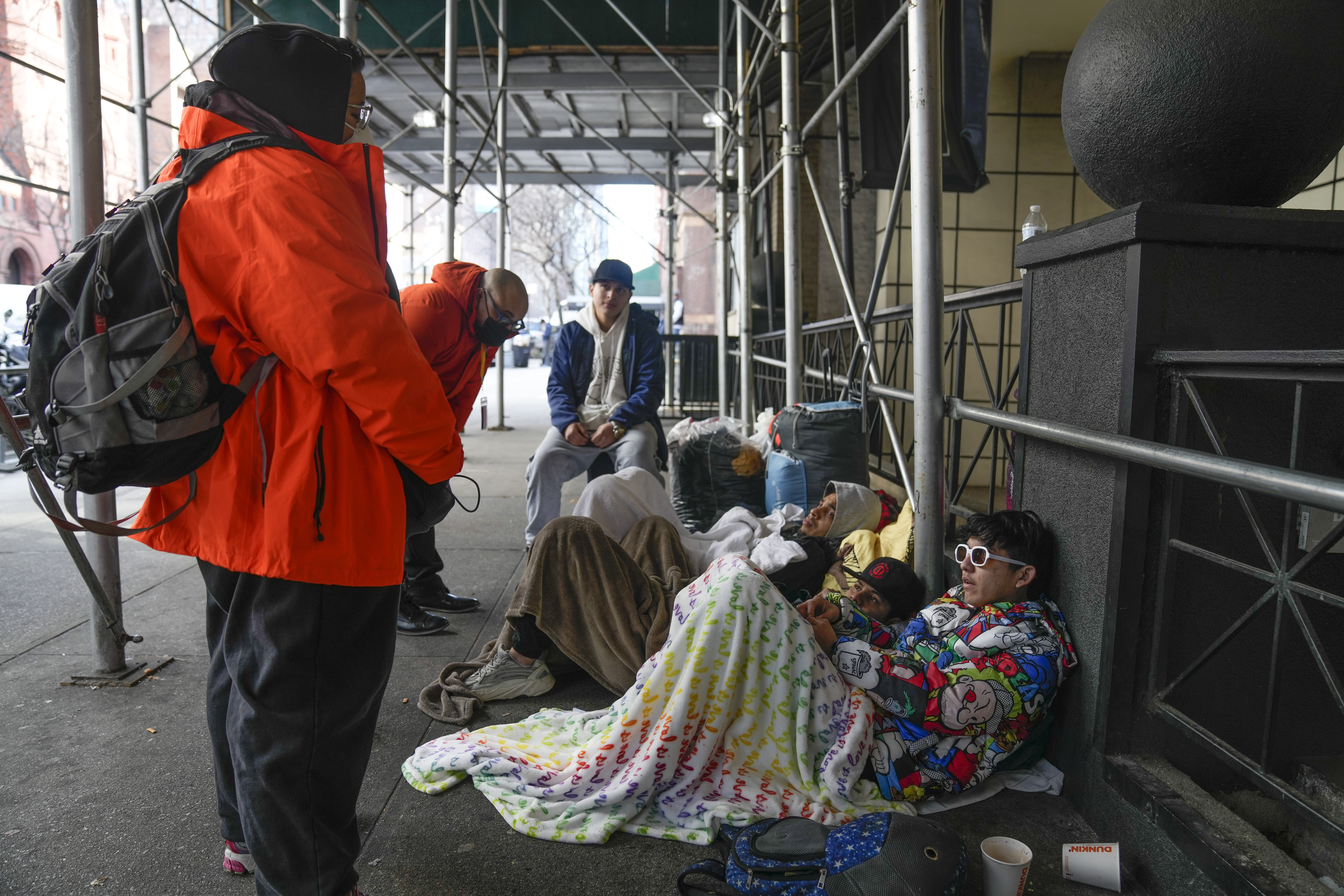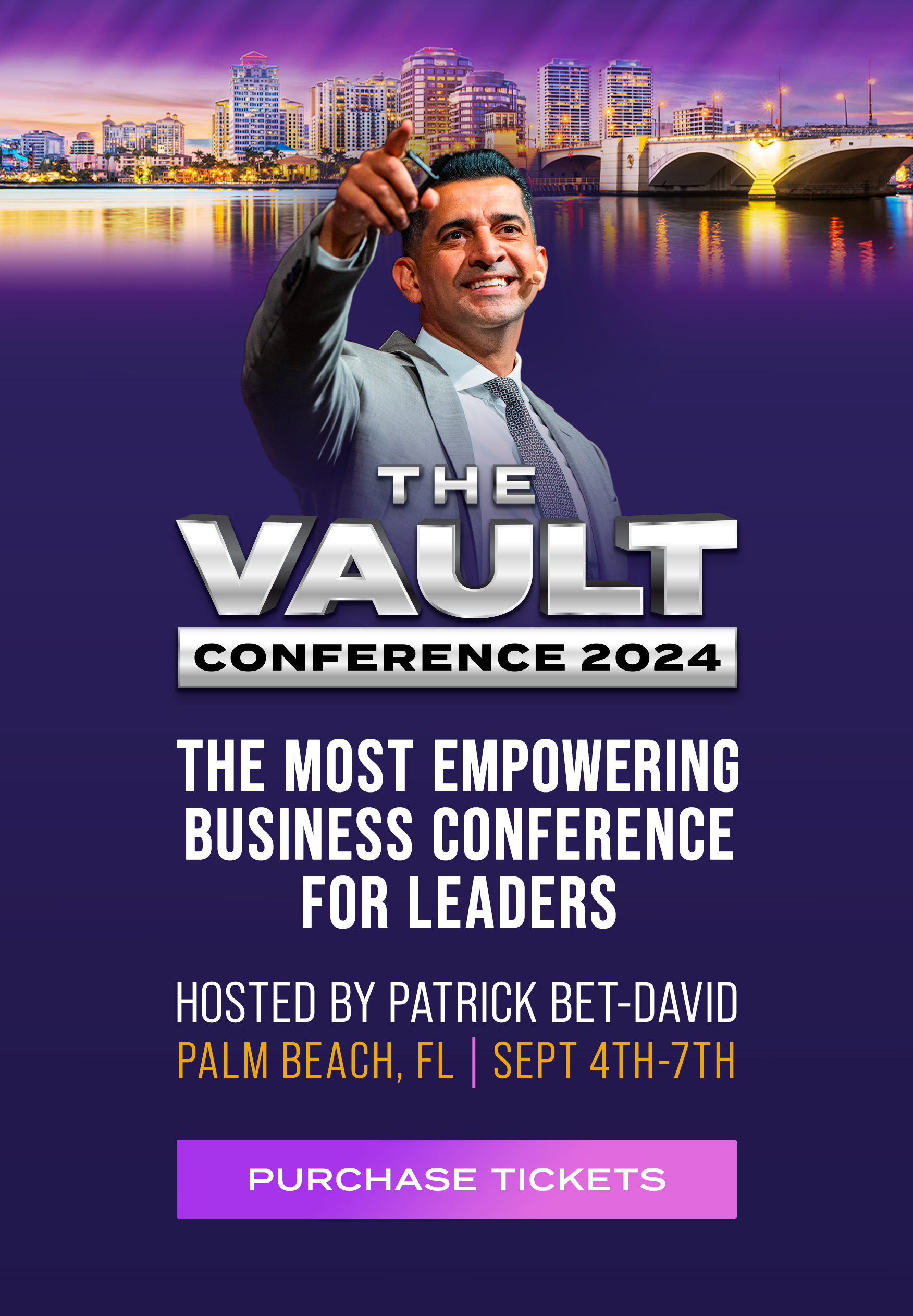I was writing this article on how to explain cryptocurrencies to your grandmothers , and, while researching, I realized the long-term vision of the creator(s) of the blockchain . I must admit that, because of this realization, all the neurons in my brain suddenly polymerized. Though this article is a bit long, I ask you to hang on; in the end, you’ll understand why the Blockchain is the most incredible, disruptive thing man has invented, why the real revolution is not Bitcoin but the blockchain, and why states will do everything they can to control it. This article is going to require you to take a step back, be open-minded, and let go, so sit back and enjoy the read because this is biblical….
If Jesus Christ was to be reincarnated on earth, he would do so in the form of the blockchain.
Here is a deliberately simplified or even romanticized article using big shortcuts in which I begin quite naturally by explaining what a blockchain is.
I will first show the difference between a cryptocurrency and a blockchain, two terms associated with each other which are sometimes confused as meaning the same thing. A blockchain is not a cryptocurrency, and vice versa. Simply put, a cryptocurrency relies on an incorruptible and unfalsifiable method of transaction certification and archiving called a blockchain. There are plenty of blockchains in use today, and, as you will see later, they can be used for many things other than supporting the infrastructure of a cryptocurrency. If we push the reasoning, we could say that, “normally, ” a bank is not money, and money is not a bank. Even if the two are associated with each other, one (the bank) is the engine of the other (money). Another confusing terminology that gives cryptocurrencies a bad reputation is the word “crypto.” People imagine that since everything is encrypted and obscure, no one can see what’s in the blockchain and, therefore, that Bitcoin is essentially used to buy weapons or drugs on the dark web or, even worse, to buy a Tesla! In fact, the blockchains that support cryptocurrencies like Bitcoin or Ethereum, for example, do use a cryptographic system to prevent the content from being corrupted, but the content itself, at least regarding the transactions of the cryptos Bitcoin and Ethereum, is not encrypted.
A blockchain is, therefore, an incorruptible and unfalsifiable method of transaction certification and archiving that cannot be corrupted partly because it is not centralized in one place and partly because it takes several people to validate each transaction.
Consider this fanciful and totally fictional scenario: When transactions are centralized in one place, a bank employee could, for example, enter its computer system and transfer money from a customer’s account to his or her own account and then remove all traces of the transaction logs. With today’s computers, the right people, and the right tools, it is easy to tamper with an entire computer system, and it is even easier if you have the keys and exclusive access behind closed doors. As soon as there is only one person or one government which has the keys to a system or a power, the system or power has the potential to be corruptible and subject to errors, whether accidental or not. One could also imagine an error in the transmission of data from one department to another if the bank were to create an inconsistent transaction on a bank account.
One way of solving this banking problem would be to decentralize the system: All of the bank’s clients could have a computer connected to the bank at home to maintain an “unencrypted” copy of all the clients’ transactions in real time. If we wanted to go further, a transaction could have to be validated by all the computers at all the clients’ homes to be officially archived and considered valid. Validating a transaction will check that it has passed all the normal steps defined in advance: that the money arriving to an account has been deposited at the counter then counted, that the serial numbers of the banknotes have been checked, that they are not part of a stolen batch of banknotes, that they were entered in the right register…. In short, validation requires that the whole normal chain of operations of this kind is transparent, respected, valid, and traceable. For this to happen, all of the bank’s tools, including their banknote counting machines and cheque scanning machines, would also have to be connected to the system in order to provide information in real time.
If someone on the bank or client side wanted to insert a false transaction into the account books, they would have to get all the clients and bank staff around the table and agree to falsify the transaction(s) on their own computer at the same time. And since, by design, the system needs everyone’s agreement to validate each transaction, all it takes is one person who say no to go along with the scheme to prevent any malfeasance. The integrity of the transactions—the truth— then, becomes the responsibility of everyone, not just one person, bureau, or state. You may have noticed that I have casually inserted the word “state.”
As soon as the bank has a new client, the latter turns on his computer at home, starts downloading all the transactions from the very first one, and then starts validating and recording the transactions . The more customers there are, the more difficult it is to tamper with the system. All the computers at the clients’ premises that help validate and record the transactions and therefore keep the information accessible would be called “miners.” As each miner uses their own electricity and their own computer, they would be rewarded with a little money each time they perform validations. (I will say more on the use of the word “miner” and the principle of “mining” below.)
The technical process that would allow transactions to be organized and validated is complicated and not worth detailing here. All you need to know at this stage is that banking transactions would be recorded and organized in blocks of information and that these blocks would be linked— chained to each other in such a way that they would validate their predecessors If someone were to change a single piece of information in any block, the balance of the whole blockchain would be compromised, and all the miners would immediately know who did it and would automatically reject the new information. This chain of information blocks would be called a blockchain. Simply put, that’s how a blockchain works.
It is difficult to miss the fact that, in this fantasy banking scenario, all transactions are exchanged in clear text, so everyone knows who is doing what. The advantage of transparency is that it makes things less falsifiable; the disadvantage is that no one really has any privacy. In our example applied to the bank, we could decide to have only the bank account number and not the name of the client in the blockchain in order to make things slightly more anonymous. Only the bank would know the name of the customer associated with a particular account number. But since all the bank’s customers have a copy of the transactions, anyone could analyze a bank account and deduce the identity of the person behind the account from the habits and locations of the money is spent. Keep in mind all of the privacy aspects of this fictional scenario as it is the same for Bitcoin and other cryptocurrencies.
Before moving on, I’d like to summarize this hypothetical case of a blockchain being applied to the corporate world of banking. Everyone would have an unencrypted copy of the account books, but no one would know the identity of the customers associated with the account numbers. Everyone checks everyone’s transactions and validates the integrity of each transaction, and no transaction is valid until everyone agrees. So, if you want to corrupt a transaction on the blockchain, you need everyone’s agreement to change a transaction on a block. Since blocks depend on each other for validation, the entire blockchain will have to be recalculated to balance again with this new information. The more people there are, the more complicated it is to corrupt what Michael Casey and Paul Vigna call “The Truth Machine.” Again, try to imagine a world where the important things are written in an incorruptible blockchain.
On the one hand, we have a blockchain technology that can no longer be corrupted by humans, and on the other, we have an example of how it can be applied to the corporate world—in this case to banking—to make it impossible to make any mistakes or embezzlement. Knowing this, you can use blockchains to validate many types of operations (such as accounting, tax returns, administrative paperwork, certificates, and any legal, notarial, real estate, or cadastral deed) and to make them one-hundred times simpler and faster. They could also be used to validate the results of any scientific study, competition, election, poll, and unemployment and inflation figures as well as the numbers and causes of illnesses or deaths from a variety of diseases. One could even prevent financial organizations from manipulating the prices of precious metals, oil, or any other commodity. In the current Covid crisis, if all the machines that do virological tests and all the electronic medical devices that are in hospitals were connected to a blockchain , we would have all the exact data of all the patients. This would put a stop to all those conspiracy theorists who don’t trust politicians and scientists who are too close to certain pharmaceutical companies for their taste.
It is easy to imagine that many jobs, such as lawyers, accountants, or notaries, will soon disappear since a large part of their work consists of verifying and validating operations or transactions. As humans, they can be corrupted, or worse, make mistakes. Yes, we live in a world where corruptions is almost normal. Here is a practical example of how blockchains could make certain jobs unneeded: A business-owner buys office supplies for their company. They pay with their phone and mark the payment on their mobile app as a “business expense.” Instantly and automatically, their merchant sends their invoice not to their accountant but directly to their tax administration with the correct account numbers for all the items they bought. Their VAT (Value Added Tax) and tax return are instantly calculated. Paper and accountants are no longer needed; the latter is only a paper-pusher interface between the business-owner’s company and the Tax-collecting state. The blockchain in all of this guarantees the integrity and the unfalsifiability of the whole process. For this kind of operation, it would be possible to encrypt the information circulating on the blockchain. Accounting firms will certainly be transformed into legal and business advisory firms.
Implementing applications of the blockchain will have an impact on all the data entry jobs and the paper-pushing jobs that interface between people and the state. The last lock down have shown a certain category of office workers how unnecessary they really are. It is obvious that a properly implemented blockchain in everyday life would put hundreds of millions of people out of work, but there must be work which is more useful for society and more exciting for them to do than sitting in a neon-lit office for eight hours each day typing on a keyboard.
Recently, we have seen a new type of artistic property certificate called NFT (Non Fungible Token) which solves a small problem that artists who create digital, graphic, animated, or musical works on computers have. You don’t need a title deed for the “Mona Lisa”—there is only one, and the only owner is the one who has it hung it on their wall. But how does one, as an artist, give a client a certificate of ownership for a graphic creation that, once displayed on the Internet, can be saved identically by absolutely anyone by simply “right-clicking + Save Image or Video As”? How does the client instantly prove to the world that, out of the millions of pixel-perfect copies of a digital work saved on millions of computers, only they own it, and, more importantly, only they have the right to resell it?
It’s a shame to have to print two or three copies of a digital work on falsifiable paper that will eventually turn yellow.
Besides, how could one put the MP3 of their music on paper? How could the paper give any idea of how one’s digital animation and musical creation would look and sound? The solution is simple: As an artist, one can copy their digital work into a blockchain (the ones that run well-deployed cryptocurrencies such as Bitcoin or Ethereum, for example) and write the name of the person who owns it. A unique certificate is generated and given to the new owner who then stores that certificate in their digital wallet. Every one of these acquisitions are made accessible through the acquirer’s application on their mobile phone. Blockchains can not only store transactional data but also digital content. A blockchain is impossible to stop; it is alive as long as there are miners to maintain it. So, unlike an office that manages intellectual property which could also simply fall victim to a fire, it is quite possible that the Bitcoin blockchain, for example, will be maintained for centuries to come.
Now, I would like to move on to explaining cryptocurrencies. At this point, it should be common knowledge that almost country in the world, not even the US, has their own currency. The US Dollar is a private currency issued by a conglomerate of private banks: the Federal Reserve. As powerful as he is, if the President of the United States, the elected representative of the American people, needs money to build a road, he is obliged to borrow dollars from private banks which alone have the privilege of printing them out of thin air and with almost no compensation. Well, yes, they are supposed to have a certain amount of gold in return, gold which they probably buy with the notes they print. This money borrowed from private banks to build a road will be paid back to the banks with taxes levied on the people. There is nothing federal about the US Federal Reserve; it is an association of private banks. The word “federal” is used here only to make it sound more serious and to deceive the American people about its true private nature. Furthermore, the paper US Dollar that is in your pocket does not belong to you; it belongs to the US Federal Reserve which grants you permission to use it. It says “Federal Reserve Note” on it.
And so, following the stock market crash of 2008, an obscure stranger by the name of Satoshi Nakamoto thought the following: If, thanks to an unfalsifiable technology such as Blockchain, the people owned and controlled the value of their own money, it would prevent states from creating debt that would be repaid by taxes levied on the people every time money was needed to build a road, an airport, a hospital, a school or to pay state officials. It will also prevent the people from being betrayed by the state when the latter asks the private banks to print pallets of money to bail out other banks, also private, which should have failed because of their incompetence. Then to make the people bear the triple penalty of debt repayment plus the creation and circulation of this new money in the economy, which leads to a loss of value of the currency plus price inflation. The privatization of profits for the banks and the mutualization of debts on the people, the favorite game of the banks and the states, would be solved once and for all. We would hardly need banks anymore. Money must belong to the states and therefore to the people, and for the moment this is not the case in any country in the world. Henry Ford himself said in his time:
“It is very well that the people of the nation do not understand our banking and monetary system, for if they did, I believe there would be a revolution before tomorrow morning.”
Satoshi Nakamoto created the first cryptocurrency Bitcoin (BTC) in 2009; his white paper explaining how a blockchain works was published in 2006. As there can only be 21 million Bitcoins in existence, its known rarity will allow it to keep its value, which can only increase. By comparison, current currencies, such as the USD or the Euro, are only going down because too much of it are being created, far too much, especially considering that the majority of these trillions created in 2020 and 2021 to manage the Covid crisis will be used to bail out the financial markets and therefore the richest people and companies. And it is the middle class that pays for this debt, knowing that the rich people manage to pay little or no tax.
Each Bitcoin is divisible by 8 decimal places, creating millions of billions of Bitcoin fractions, the smallest unit of which is called a Satoshi . Each Satoshi has a unique serial number and is traceable in real time from its creation. It is therefore very easy to trace its history from wallet to wallet on the blockchain back to the machine that mined it. In fact, there is enough unity and sub-unity in Bitcoin to run the global economy with a single currency held by and for the people.
Mining the Blockchain, keeping “The Truth Machine” alive, becomes a civic duty, a statement of faith, a philosophical act.
The engine that makes Bitcoin work is the “Bitcoin blockchain.” Like other blockchains, such as Ethereum, the Bitcoin blockchain is maintained by millions of miners around the world. Miners are the ones who make a computer available to validate transactions on the blockchain, keep the information alive, and are rewarded with Bitcoin for their work . Not all 21 million Bitcoins are in circulation; some are unallocated and still buried in the Bitcoin mine. There are only two ways to acquire Bitcoins: Buy existing ones or create new ones. The only way to create Bitcoins resembles digging them out of the Bitcoin mine with a shovel and a pickaxe. By making a computer available to maintain the Blockchain by validating and archiving transactions, one receives a Bitcoin reward. This is called “mining.”
The beauty of the blockchain is that anyone in the world, even you who are reading this, can anonymously dedicate a computer in your garage to validating transactions, further guaranteeing the integrity and tamper-proof-ness of the currency. And as a reward for your efforts, the provision of your time, your electricity, and the investment of your own computer, you earn some Satoshi.
As in our banking example, if one transfers Bitcoins from their Bitcoin wallet (Digital Wallet ) to another, all the miners in the world (well, at least 51%) must validate the transaction for it to be valid. They can’t just add a Bitcoin to their Digital Wallet because the miners would suddenly see it. At the moment, Bitcoin is not a universally accepted currency yet; it’s more like a speculative security resembling a stock, and millions of people are investing billions in it. Note that the Bitcoin and Ethereum blockchains also host thousands of other projects, including other cryptocurrencies and other projects that have nothing to do with money. Since we have an open and transparent “Truth Machine” mined by the computing power of tens of millions of people around the world, we can graft any type of application onto it in parallel.
For example, we could run a social network or a search engine without any censorship or manipulation of the algorithm determined by whether you are identified as a right or left political voter. No more videos or posts could disappear. Today, if they wanted to, the Big Tech companies have the power to literally clean the whole Internet of any bit of information, and they don’t hesitate to do it. If in 200 years historians rely only on mainstream media and social networks supported by Big Techs, it is very likely that they will have a totally biased view of current events. I would have liked to know who were the conspiracists before the second world war who were silenced, whose writings were burned, and who had been warning for years that the Germans were going to invade France and that they would not care about the great Maginot Line of defense. Whether the information is good or bad, true or false, biased or not, they all represent currents of thought that must be archived to understand history. Are you beginning to understand the power of blockchain technology?
On a macro level, blockchains are a direct competitor with Big Tech because the money produced to run the business goes directly into the pockets of the people who maintain the blockchain.
There are currently two applications that are already running on blockchains which are still in their infancy but have a great future:
DeFi (or “decentralized finance”) is an umbrella term for financial services on public blockchains, primarily Ethereum. With DeFi, you can do most of the things that banks support — earn interest, borrow, lend, buy insurance, trade derivatives, trade assets, and more — but it’s faster and doesn’t require paperwork or a third party. As with crypto generally, DeFi is global, peer-to-peer (meaning directly between two people, not routed through a centralized system), pseudonymous, and open to all. (Source Coinbase )
Smart contracts: Just like any contract, smart contracts lay out the terms of an agreement or deal. What makes smart contracts “smart,” however, is that the terms are established and executed as code running on a blockchain, rather than on paper sitting on a lawyer’s desk. Smart contracts expand on the basic idea behind Bitcoin — sending and receiving money without a “trusted intermediary” like a bank in the middle — to make it possible to securely automate and decentralize virtually any kind of deal or transaction, no matter how complex. And because they run on a blockchain like Ethereum, they offer security, reliability, and borderless accessibility. (Source Coinbase)
Just as anyone can open an account on an online buying and trading platform, purchase commodities with their credit card number, or make a bank transfer to buy Tesla or Apple shares, there are online trading platforms with exactly the same copy-paste interfaces that allow you to do the same buying, selling, and trading of cryptocurrencies. If you know how to use a stock trading platform, you know how to use a cryptocurrency trading platform. It’s absolutely identical aside from one small difference: If your bank or stock-trading platform closes down overnight, I’m not sure how you’re going to get your money and your shares back. For cryptocurrencies, it’s the same; as long as your cryptocurrencies are in the trading platform, they are in danger because the platform could close. However, you can remove them from the trading platform and put them in your own Digital Wallet which is a long series of numbers and letters . It should be noted that when you put cryptocurrencies in your Digital Wallet, you are not taking them off the Blockchain; you are simply informing everyone that all of these Bitcoin serial numbers are associated with this wallet and no one can use them or change anything because only you have the keys. Remember that each smallest unit of Bitcoin, each Satoshi, has a unique serial number. You don’t have loose cryptocurrency; you have an exact amount of certain Satoshi serial numbers in your hand which are perfectly traceable in real time unlike banknotes whose serial numbers are only traceable when they are checked at a bank counter.
Regarding cryptocurrency trading platforms, there are two kinds: platforms that are connected to the global banking system and those that aren’t. In order to deposit and withdraw Dollars or Euros, for example, within those that are connected to the global banking system, this kind of platform needs to know the full identity of each of their clients. This process is called KYC (Know Your Customer). Platforms that are not connected to the banking system cannot receive cash and can only trade cryptocurrencies that you already have. In general, the latter platforms do not have KYC; an email address is enough to register. This is ideal for trading cryptocurrencies “relatively” anonymously, as nothing is really anonymous for long on the cryptocurrency blockchains.
The Bitcoin or Ethereum blockchains are, by definition, completely transparent, and anyone on the planet can download the entire blockchain and see its contents from the beginning. For cryptocurrencies hosted on the Bitcoin blockchain, and in order to have some anonymity, there is no name on your Digital Wallet—it is just a long string of letters and numbers. With the right tool, you can verify absolutely all of a wallet’s transactions even if you don’t know who owns it. And just like our example with the bank, only the cryptocurrency trading platforms know the names of the clients associated with a particular digital wallet . This means that if a state decides to track transactions on the Bitcoin or Ethereum blockchain and at some point comes across the digital wallet of a client of a trading platform with KYC, the state will be able to ask the platform for the identity of the client, and the platform will have no choice but to oblige.
It is possible to create a completely anonymous digital wallet online in a few minutes. If someone started mining the Bitcoin blockchain in their garage tomorrow and deposited their rewards in their anonymous Digital Wallet, the state can see what’s inside but doesn’t know where or who they are and can’t tax them. On the other hand, the state can do much worse: Ask all of the cryptocurrency trading platforms with KYC and even the big online shops that accept Bitcoins, like Amazon or Tesla, not to accept certain serial numbers. So, it is possible to end up with marked and unusable Bitcoins. Their owner can make them grow on a platform without KYC which will certainly accept them, but it will be impossible for them to convert those Bitcoins into USD or Euros because the only exit doors are the platforms with KYC which are linked to the banking system. Cryptocurrencies are indeed a tool for mass surveillance—a real joy for the states. Suddenly, all the talk of Bitcoin’s fungibility falls by the wayside because a certain unmarked Bitcoin may not be worth the same as another that is marked. Imagine that your cousin transfers Bitcoins to you and one day the police come to your house, asking you how it is that you have in your possession Bitcoins whose serial numbers have passed through a smuggler’s Digital Wallet 2 years ago? Not only will you have to answer for this, but your Bitcoins will be blacklisted everywhere. Thus, all the conspiracy theories about Bitcoin being used to fund terrorism are completely false. Terrorism is financed with suitcases of green notes issued by the federal reserve and bank transfers made by individuals in suits who have ties to specialized official banks.
All over the world, usually scattered in shopping malls, there are a kind of reverse cash machines with which you use banknotes to buy cryptocurrencies which you transfer to your anonymously online created Digital Wallet. This is an anonymous way to convert banknotes into cryptocurrencies, but beware: the fees and conversion rates of these machines are usually quite high which is not very serious as cryptocurrencies usually make a lot of profits.
As I showed you before, blockchains can be used to validate many different types of transactions. For years now, thousands of new cryptocurrencies have been created with a special purpose or story to convince consumers to buy their coins. Very few cryptocurrencies have their own blockchain; usually, they are based on the Bitcoin or Ethereum blockchains, the latter of which is being mined by hundreds of millions of computers . Some cryptocurrencies will be developed as tokens to play in virtual casinos, to fund projects, and to create specialized blockchains for certain types of computer operations while some cryptocurrencies, like Dogecoin, have absolutely no purpose other than to troll the system. One could consider Dogecoin a work of art, a digital joke which lots of people have bought.
Cryptocurrencies are like startups; there are thousands of them on the market. At least 95% of them will never succeed or meet their audience. Some refer to them as “Shit Coins.” Not all of them are listed on all trading platforms. Smaller cryptocurrencies that do not have enough daily trading volume to be profitable on the big platforms like Binance, end up on smaller, lesser-known platforms without KYC.
For my part—and this is in no way a financial investment advice—I bet that in the years to come, when some people will have been caught out by the tax services on Bitcoins, there will be a switch to cryptocurrencies which are anonymous by default. There are currently two that look quite serious and whose blockchains are fully encrypted and do not allow any tracking: Monero (XMR) and Pirate Chain (ARRR). The Bitcoin blockchain will be the engine for many projects that don’t require anonymity, but for money, people will switch to anonymous cryptocurrencies by default to escape state control. I would also trust cryptos, like DERO or XEQ, which are specialized in creating anonymous smart contracts.
In conclusion, I’d like you to imagine the problems that a well implemented blockchain would solve in everyday life. Imagine a society without any possible lies with an incorruptible system that, for everything that matters, would forbid anyone to falsify or lie. The states, which always have a tendency to play with numbers when it suits them, and the conspiracy theorists, who see manipulation everywhere as soon as a figure seems dubious or comes out of the mouth of a politician who has already flipped his coat five times since he started its political career. Today, we have the state playing the role of “guarantor of truth and good thinking,” and this is a problem because of how human and therefore corruptible it is.
Are you beginning to understand the beauty of the “Truth Machine”? There could be a society that would function almost without a governing state nor a centralized bank, where the people administer themselves in complete transparency and confidence without debt nor inflation, and whose currency value does not fall.
The best part of all of this is that, once a blockchain is up and running, it escapes its designers completely and belongs to the community of people who mine it. The best part is that it is almost impossible to stop because it belongs to no one and to everyone at the same time , and there is no emergency stop button. It is alive as long as there are computers scattered around the world to mine it. Bitcoin is really just the tree that hides the forest and the real revolution . Remember this name: “Truth Machine.”


















Add comment